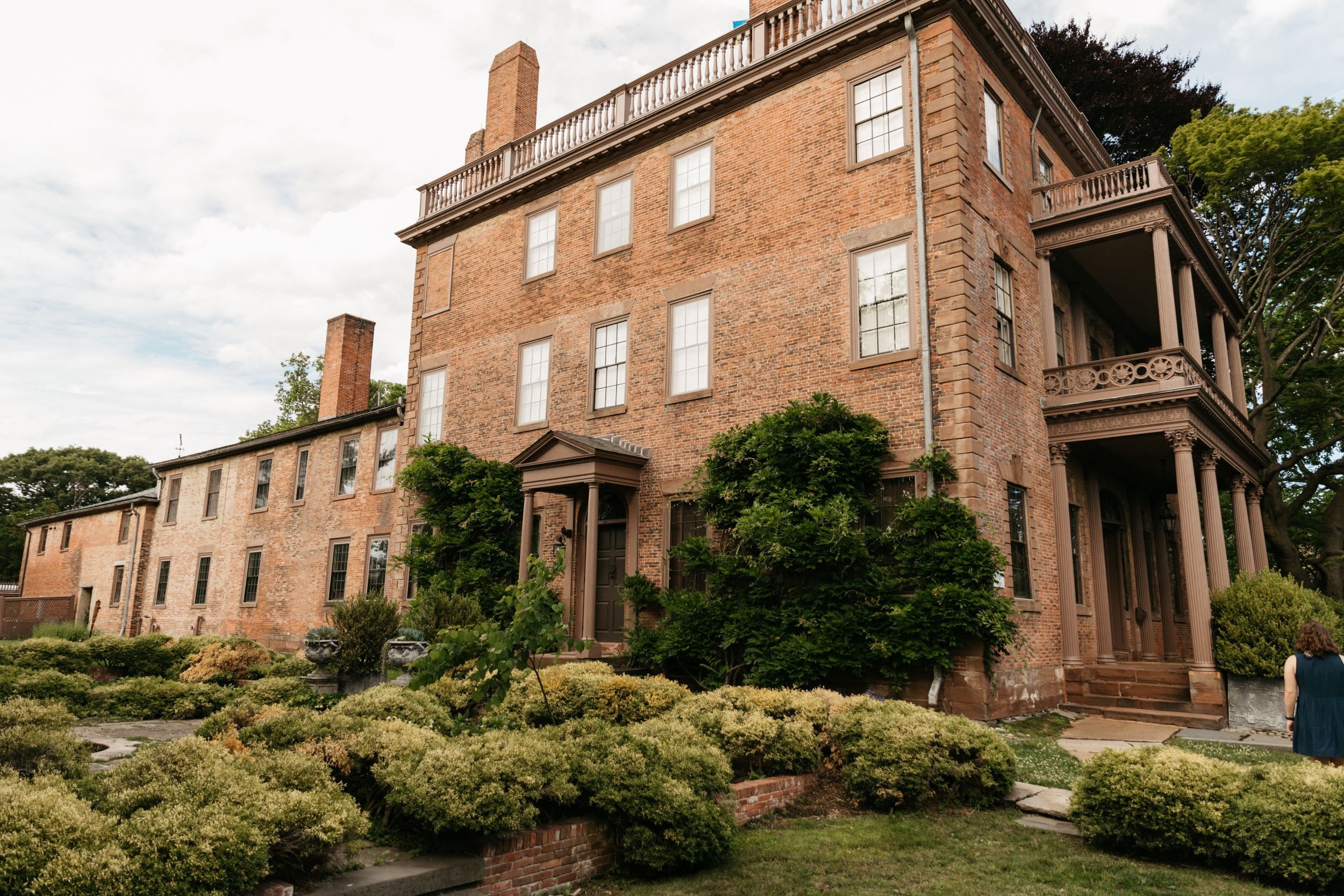Historical Context
written by Morgan Grefe, Rhode Island Historical Society
As a nation emerged out of a set of ideals, new Americans sought ways to forge a national identity, establish a new economy, and grapple with a reality far different than the dream described in the Declaration. Providence, Rhode Island, spared from occupation and destruction during the fight for independence, grew from a small community into an economic and political powerhouse of the nineteenth century. The merchant class, which dominated both, exemplified American ingenuity and determination, but rampant speculation meant that this was often done on the backs of Africans and Indigenous peoples. The choices made by these men and women continue to shape our nation today, and Providence, RI has a story to tell about some of the most fundamental and challenging aspects of our national story.
John Corliss, Edward Carrington & The Founding Leaders of Providence
When John Brown ordered a grand house to be built atop College Hill, he meant his home to be a sign not only of his wealth and power, but also the rising status of this port city. Just four years later, another house would join Brown’s, that of fellow merchant Joseph Nightingale. A Revolutionary and merchant, his firm Clark & Nightingale sold goods from the East Indies, as well as Stationary and Hardware at their Shop at the Sign of the Frying-Pan and Fish. And their trade would, like John Brown’s, also include human cargo as Rhode Island led the colonies and new states in the transatlantic slave trade. Soon Jakarta and China would be added to their international ports, and fortunes continued to grow along with the grand houses along Power Street.
And as families grew, so did the connections between these merchants who were becoming the country’s first industrialists. In 1803 Thomas Poynton Ives, merchant and banker, broke ground on his Georgian manse and created a homestead that would protect his family for more than 200 years. At age 13 Ives became a clerk to John Brown’s older brother Nicholas. Later, he went into business with Nicholas’s son Nicholas to form Brown & Ives. Further solidifying this connection, Ives married Hope Brown, the sister of his business partner. Just nine years after the completion of this house, his partner Nicholas purchased the Nightingale house and built his merchant and industrial fortune there. The three houses were now entwined parts of the Brown family.
Joseph Nightingale’s brother-in-law, John Corlis, began work on a stately brick mansion in 1810, only to have its construction interrupted by a series of legal conflicts with Spain. In need of a fresh start, Corlis headed to Kentucky to try his hand in tobacco. His unfinished Providence house was purchased by Edward Carrington. Just back from China, Carrington turned his attention to South America and the industry of the Blackstone Valley, developing a business empire that spanned the globe.
These families shaped the world around them, helping to make Rhode Island one of the wealthiest states in the expanding nation, but it was a complicated wealth with a fraught legacy. Their houses stand as grand reminders of a time when questions of conscience were inextricably linked to the burgeoning capitalism still resting on unfree labor.
For further information about Corliss Carrington House, visit the following links
Historical References:
Architectural References:
News and Real Estate Reviews:
Maps

